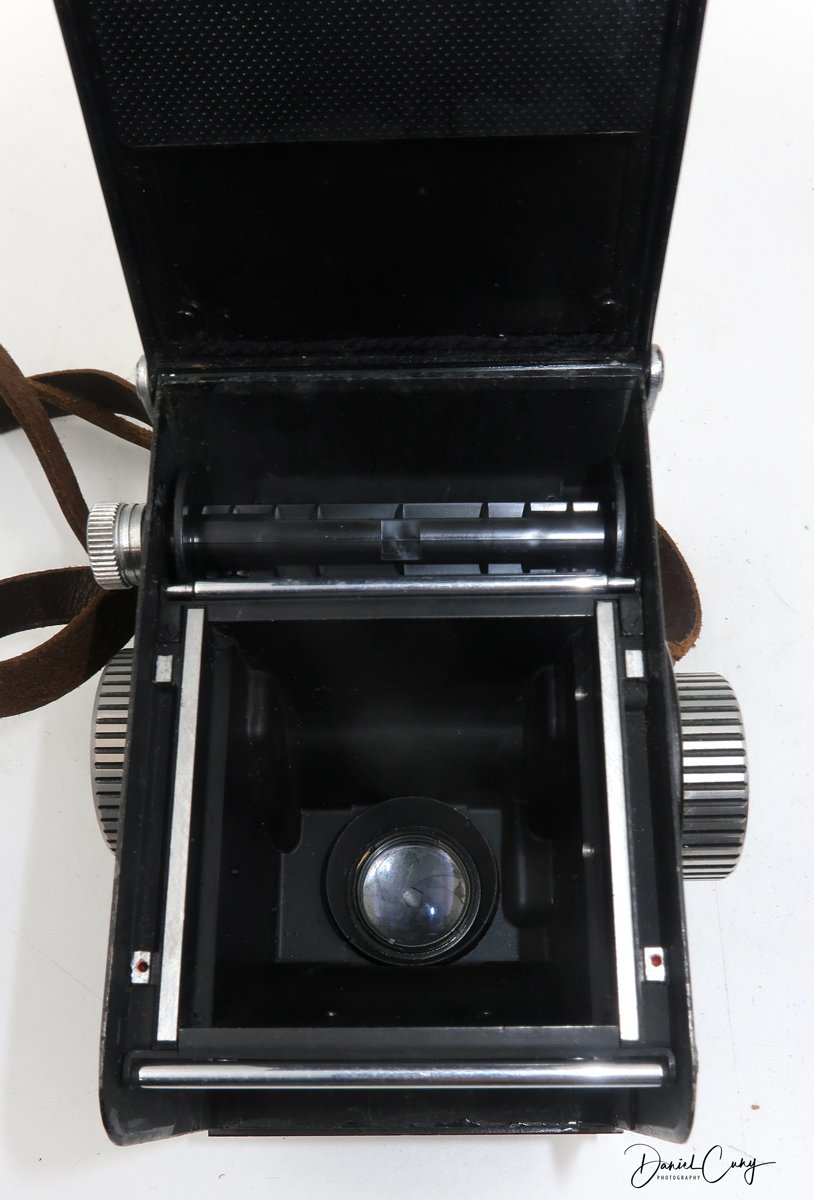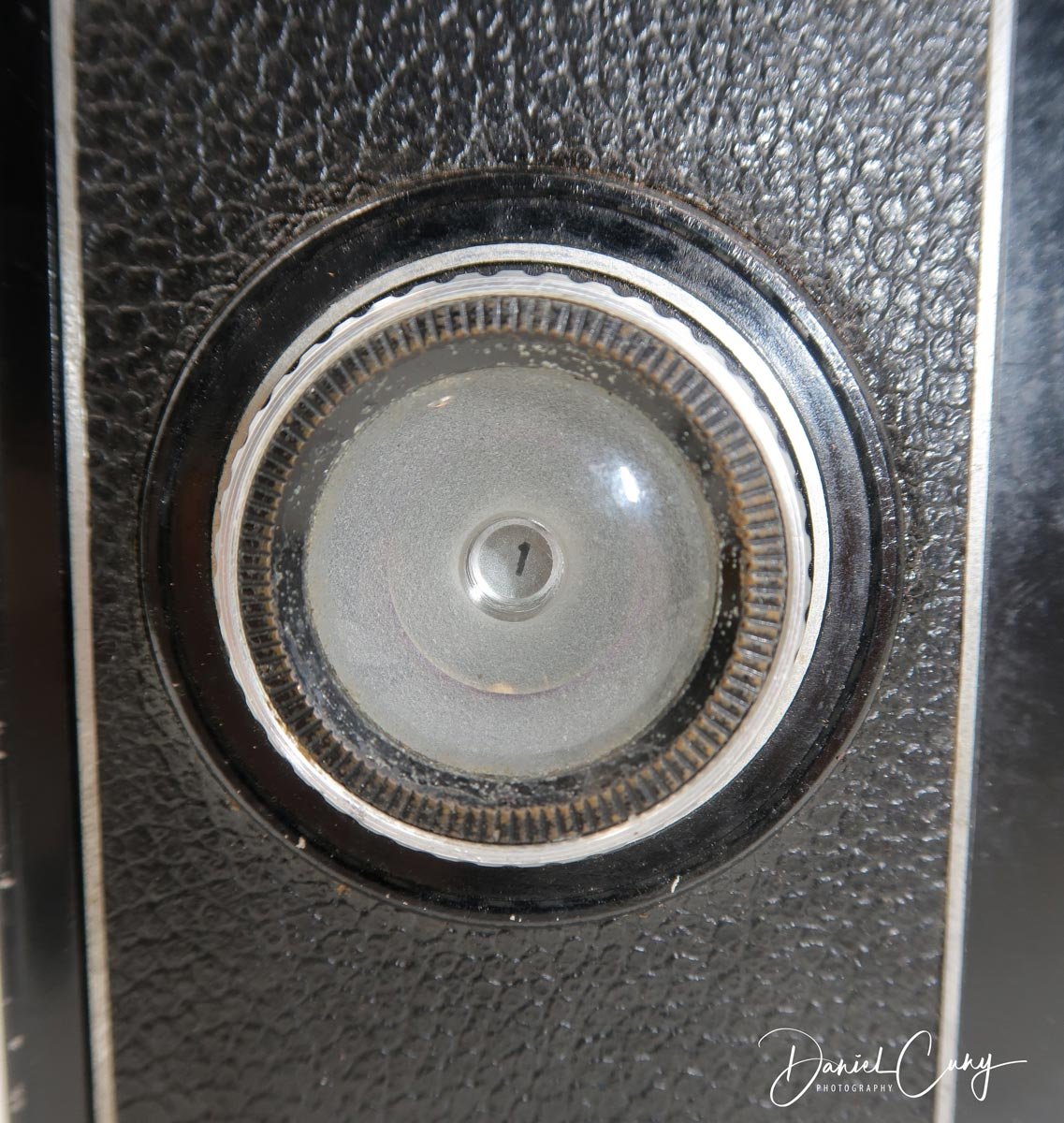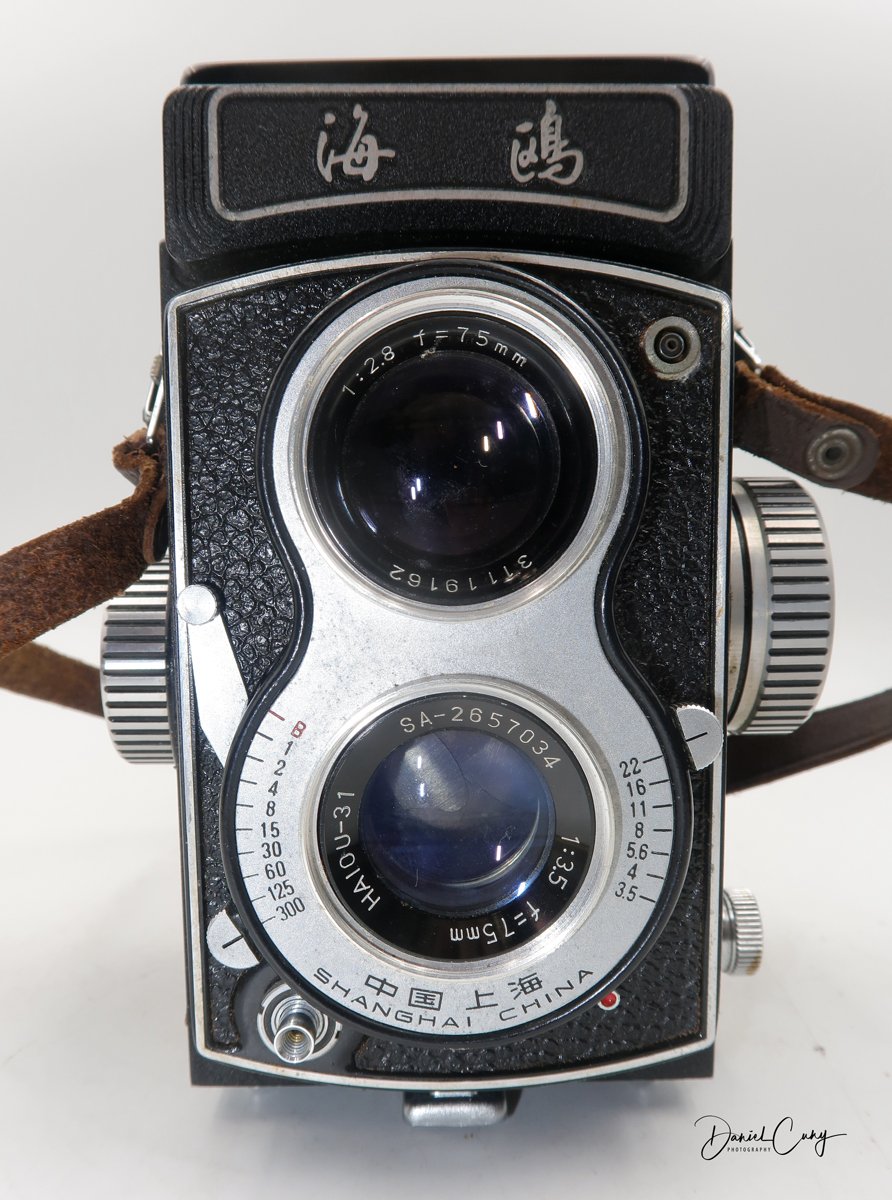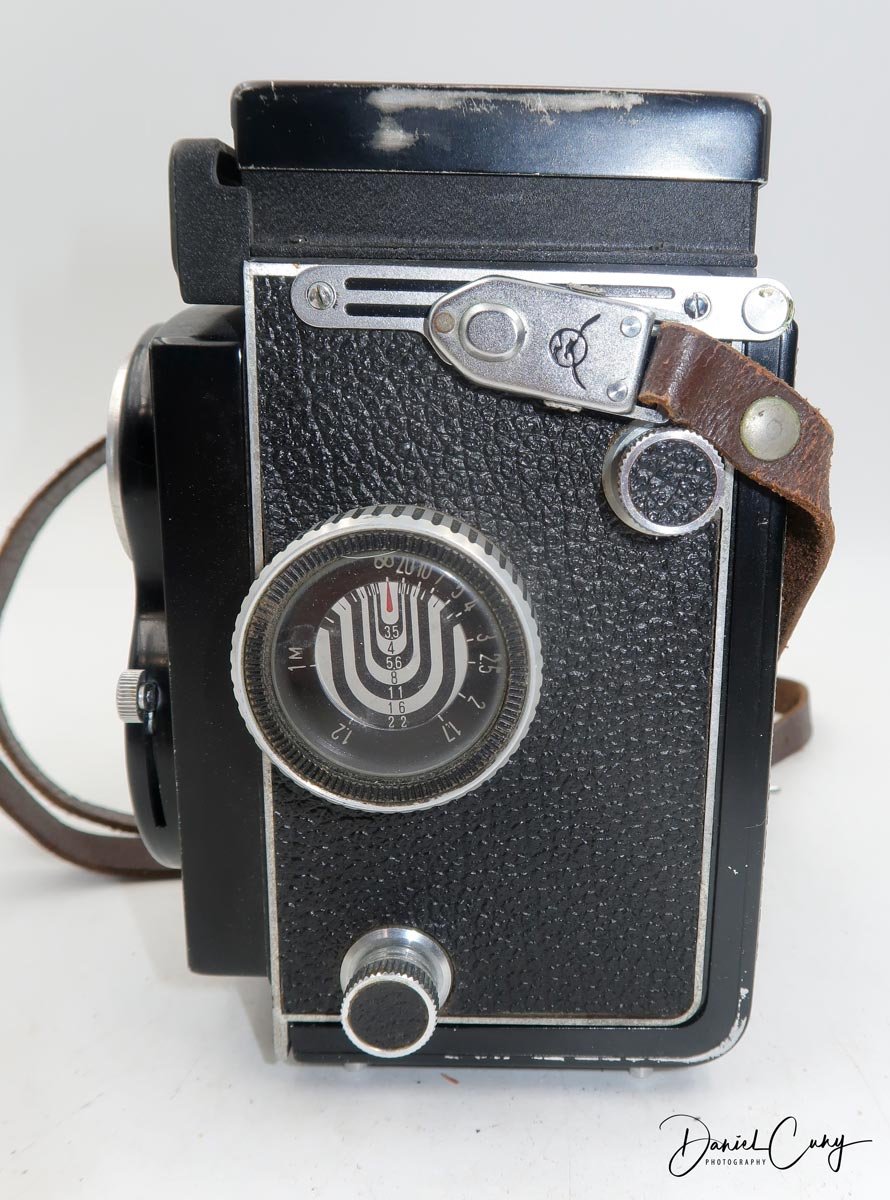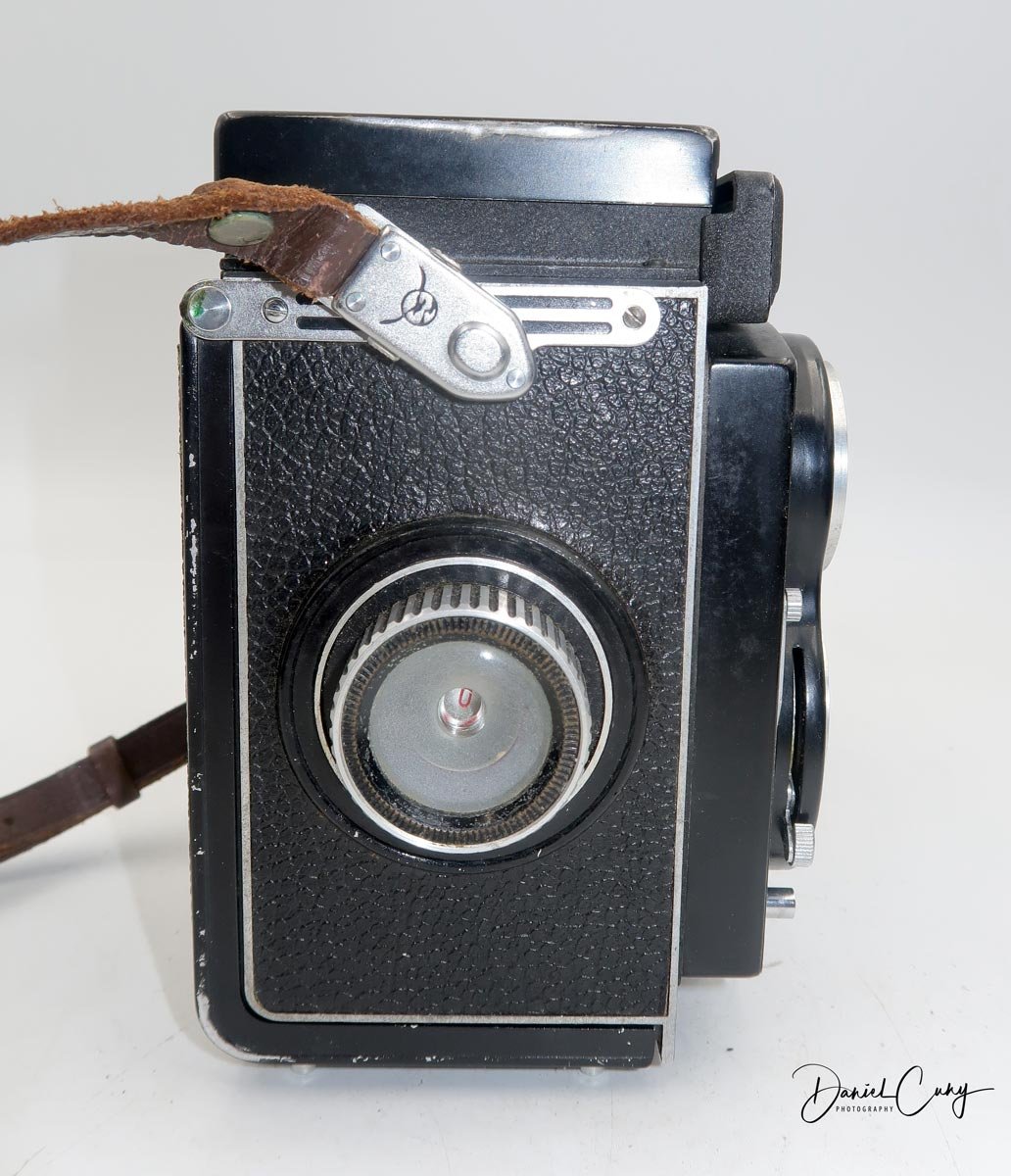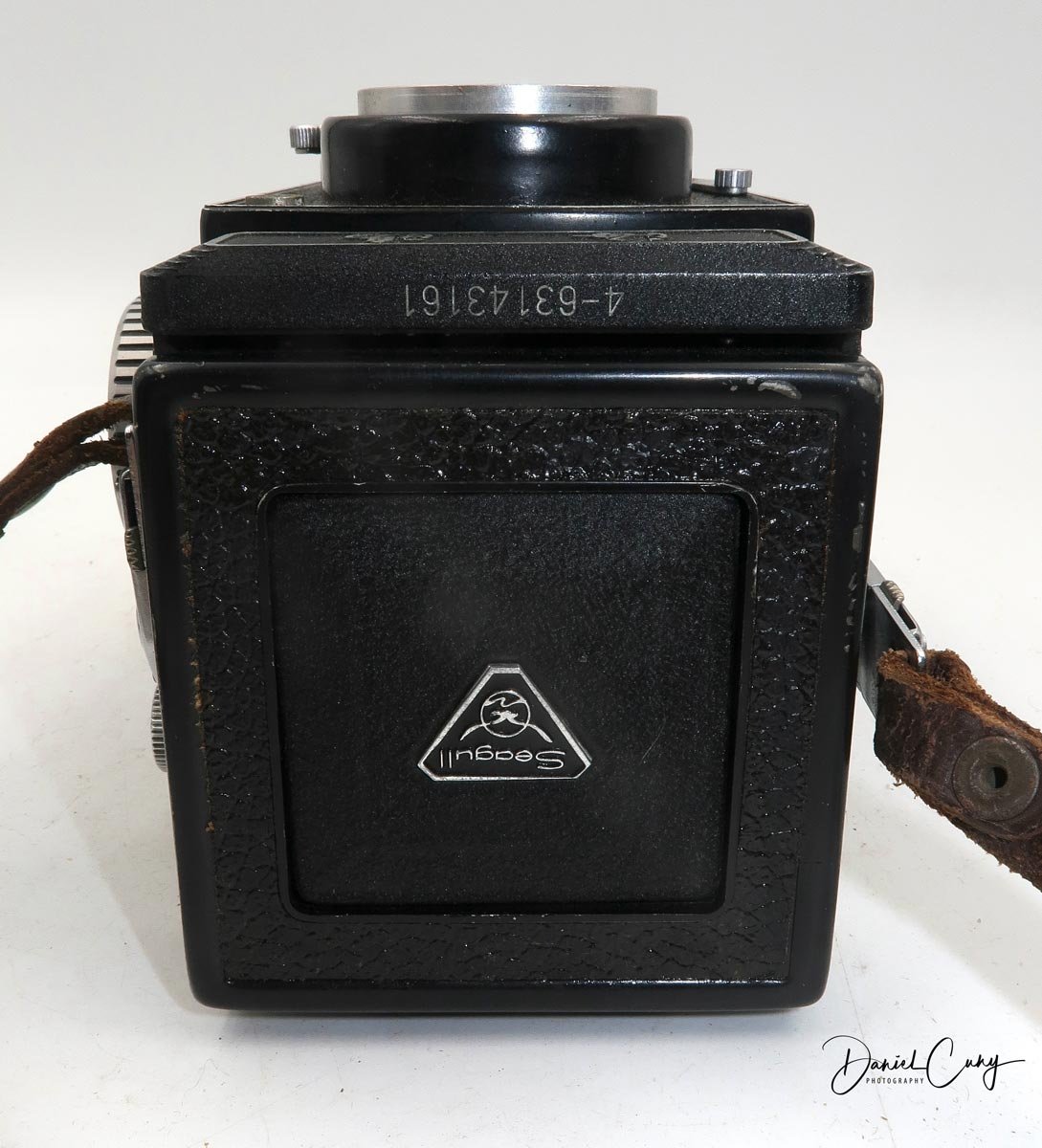It's been far too long since my last blog posting. I will do better by bringing cameras from my collection back to the forefront of my camera collection.
My camera with great leather case.
Last fall, sometime around October, I spotted a very underused and, more so, underappreciated camera on my shelves. It's from a camera company I rarely see written about. I'm writing this post about the Shanghai Seagull 4 Twin Lens camera.
HISTORY:
In my research on the Shanghai Seagull Camera Co., There's not a lot of information on the company. The camera industry in China is new and rarely shown due to the country's small number of camera companies. At least this is true in the Western world due to the Cold War and the frosty relations we had with China before Nixon's visit in 1972.
From the information found, the Shanghai Camera Company started in 1958 in Shanghai, China, and is considered the oldest camera company in China. They made several different cameras, from Twin Lens Reflex to 35mm cameras, which my father brought home for me back in the early 1970s, to folding cameras. There were many upgrades to the Seagull TLR line, and I'm not 100% sure of my model, but it's early. Most likely, it was sometime in the late 1960s or early 1970s.
Front view of Seagull 4
A new Shanghai Seagull Digital Camera Co. Ltd. started in January 2011. They state they absorbed the R&D and manufacturing of Shanghai Camera General Factory, which has a nearly 60 years history. They manufacture UAV digital cameras for observation and tactical planning, so I'm guessing they are drones.
THE CAMERA:
I've always enjoyed shooting with twin-lens reflex cameras. It was the first type of camera I owned. I shot weddings with TLR, and still, to this day, I enjoy looking through the viewfinder and popping up the magnifier to double-check focus.
To open the back to load the film. You pull down a small locking pin before turning the dial to open the back of the camera. This is a nice feature, so you don't accidentally turn the dial to open the back, exposing your film. I've not seen that on other cameras, so I'm unsure how helpful this is. When you open the back, the frame counter, which is located on the right side of the camera as you're holding it, resets to "0".
After conventionally loading the film, move the empty spool from the bottom of the camera to the top and put the fresh roll on the bottom. I am then threading over the lens area and onto the top spool. Turing the winding lever until you see the arrows from the paper backing pointing outwards. I close the back of the camera and wind the transport lever until the winding stops, and looking at the frame counter, I'm at number 1.
Here's where the camera gets a bit odd, and you'll need to determine the best way to proceed with your shooting. There is no double exposure prevention mechanism on this camera. I had maybe 7 or 8 double-exposed photos the first time I shot with it.
On the front of the camera is the average shutter speeds ranging from 1/300 to 1 sec. Along with "B". The shutter speed is set by sliding a button up or down until the marking along the lens points to the desired shutter speed. On the other side of the lens is a similar button with aperture settings from f3.5 to f22. You slide up or down to get to the desired aperture setting. This camera has no meter, so an external meter is needed.
Next to the shutter speed button is a longish bar with a knob on it which you press down to cock the shutter. Once cocked, you can press the shutter release button on the bottom right of the camera to expose your film. As mentioned above, you can do this as many times as you want to on the same photo. You'll need to either wind to your next frame, then cock the shutter and fire, or wind to your next frame just after taking a photo.
Camera Logo with Model and Serial number above.
MY EXPERIENCE:
On my first roll of film, there were many times when on a hike, I'd put the camera away after taking a photo, then walk to my next area to shoot and cock the shutter and take another on top of the last one. Once you realize there is NO DOUBLE EXPOSURE lock, you'll learn. The next time I use it, I will shoot, then wind. Walk to my next area to shoot, the cock, the shutter, shoot, and wind. Something I'm sure you're more intelligent than me and will remember.
My Granddaughter at the beach
My son, daughter in Law and Granddaughter enjoying the beach.
My wife and granddaughter headed to the beach.
Conclusion:
I enjoyed using this camera. The Seagull 4 is inexpensive, and the results are decent. It would be a great entry-level camera for someone wanting to get into medium format. I don't know if parts are readily available to fix it if it breaks down, but it's a fun camera to take photos with for now.
I appreciate you taking a few minutes to read my blog post. I have the next camera picked for the next blog post, and it won’t be long until I finish it. Until next time, please be safe and enjoy the never-ending hunt for fantastic cameras.



